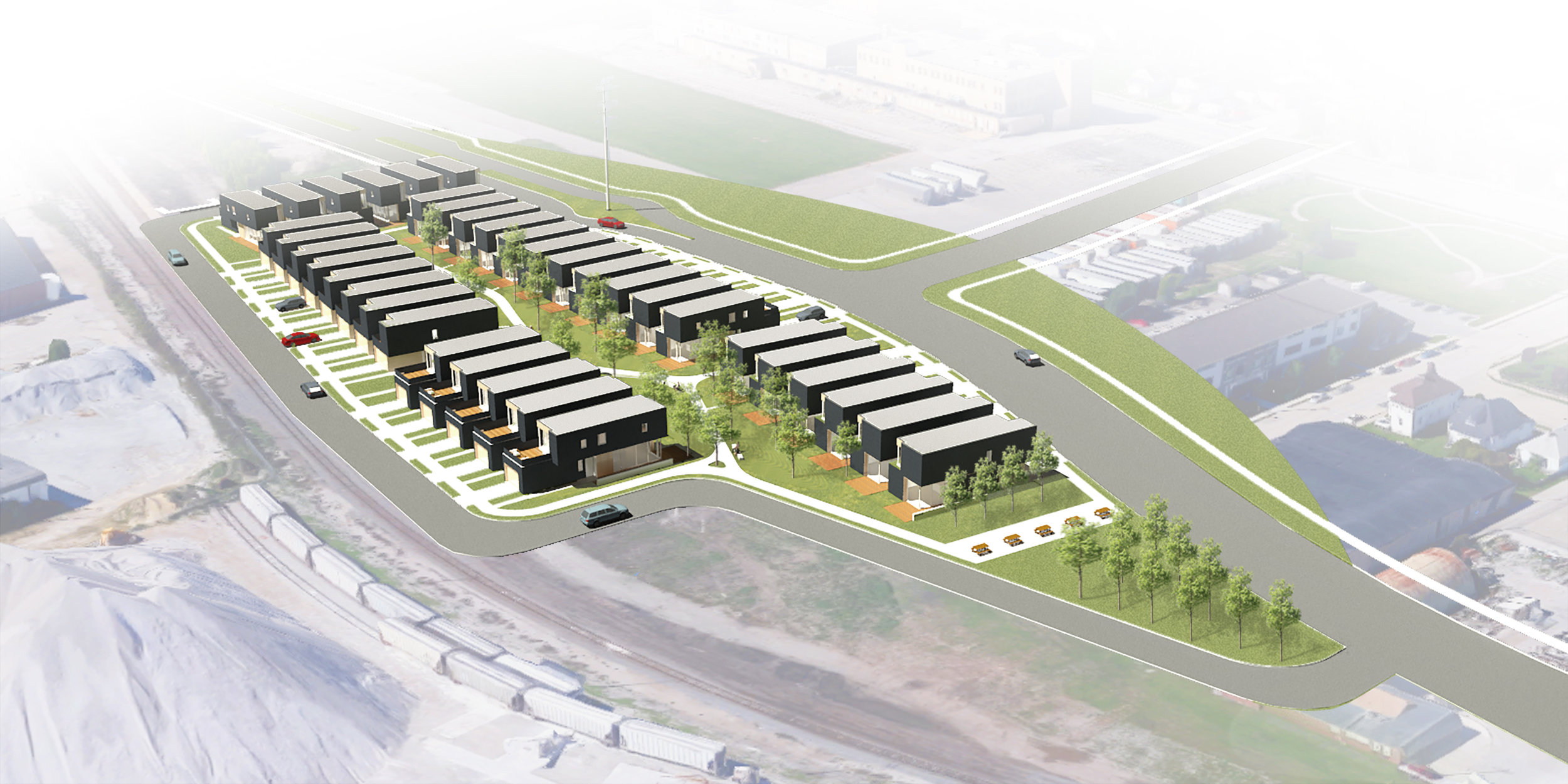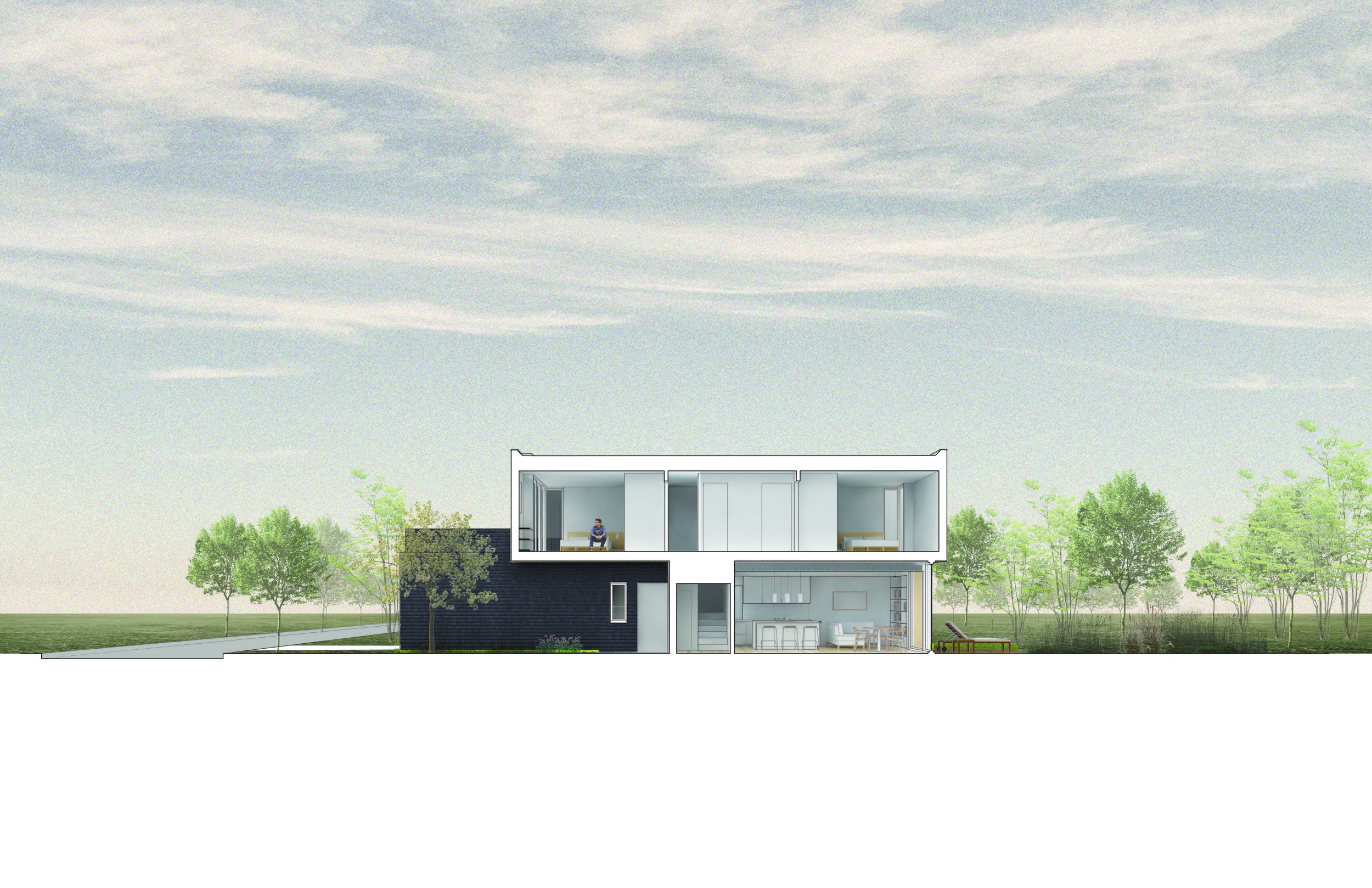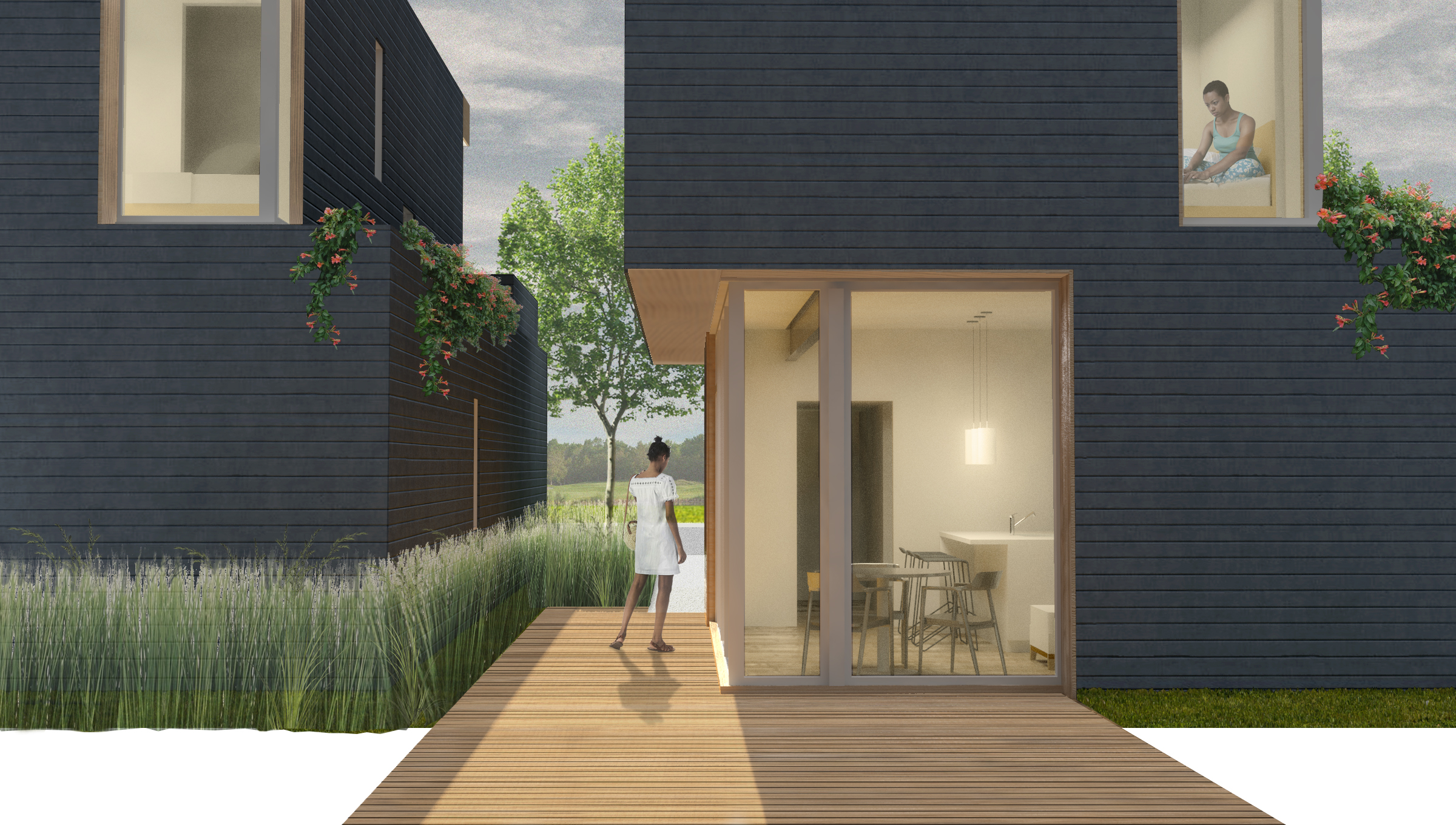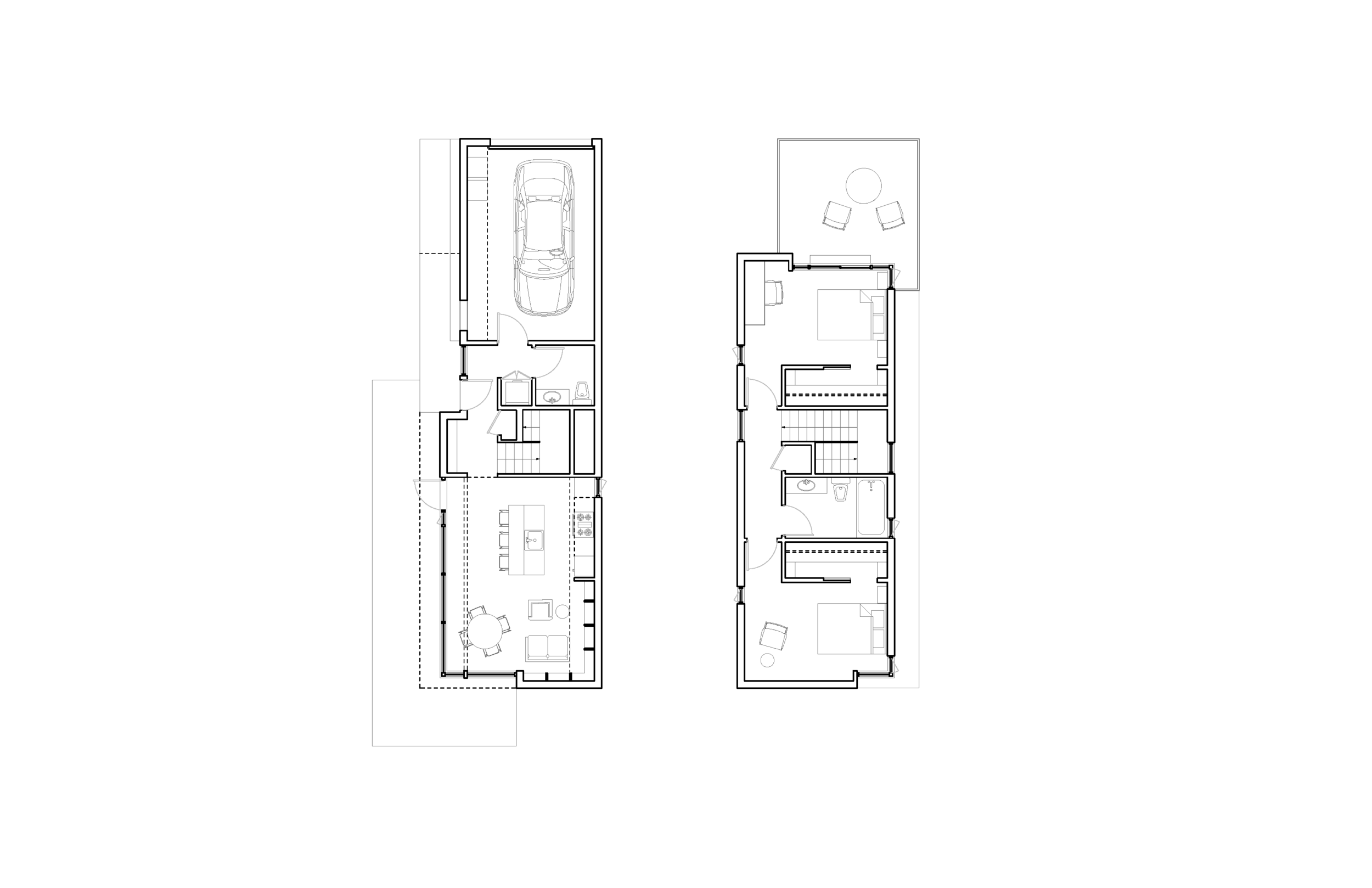






LARSEN GREEN HOUSING: a Prototype for the Surban Millennial
Research funded by the Harvard University Joint Center for Housing Studies
Among popular and academic housing predictions for 2017, two related trends offer stimulating potential to study the relationship between architectural form, affordability, and site: 1) the increase in millennials, known as the Peter Pan generation,[i] entering the market,[ii] and 2) the millennial movement “from the coasts to the ‘inland markets’ where starter homes are more affordable.”[iii] Known for delayed rites of passage toward adulthood such as marriage, careers, starting families, buying a home, Peter Pan now enters the market as the largest group of home buyers, gravitating to affordable, Midwestern markets.[iv] The Peter Pan Housing study seeks to discover an architectural prototype which accommodates millennial interests, including compact, flexible and open space, and sited within a ‘surban’ Midwestern neighborhood.
According to recent reports from the Urban Land Institute, surban communities - neighborhoods offering a combination of the most desired features of urban and suburban living - “will attract the most households in the United States over the next ten years.” [v] These neighborhoods are often situated within or near city limits, proximate to urban amenities and employment hubs (walkable to retail, for example), with lots smaller than the 1950s Levittown plats, yet offering the autonomy of single family dwellings. Millennials have established the sharing economy, and are “willing to share space and work remotely,”[vi] accepting higher levels of density typified by surban developments. Millennials are also characterized as the “we” generation, emphasizing social equity and appreciating life experience over material possession.[vii] This distinct value structure portends fascinating potential for renewed design thinking on the nature of collectivity, flexibility (for interior and exterior space), land use, and the programmatic-spatial hybridization necessary to produce a meaningful, compact dwelling.
While the small house movement has been generally unsuccessful (less than 1% of sales, according the National Association of Realtors),[viii] the concept of minimizing square footage to maximize build-quality is nevertheless useful in re-thinking the single-family dwelling for the Millennial constituency. However, rather than fetishizing the iconic house in miniature or the mobile home (inadvertently underscoring diminution, isolation, and an ascetic lifestyle), the form factor of the small house might be wholly re-imagined against the new values of the Millennial, including capacity for reproducibility, seriality and aggregation. The study of this prototype, which leverages the appetite of Peter Pan’s ethics, has the potential to transform the shape and expression of surban development. It may be that the authentic Millennial dwelling is turned inside-out, valuing connectivity and continuity with the surrounding social and physical landscape as much as (or perhaps more than) the creation of distinctly bounded private domains.
[i] Karen Shaputis, sociologist, labelled Millennials as the Boomerang Generation or Peter Pan generation.
[ii] JCHS, State of Housing, 2017.
[iii] Sharf, Samantha. Jan 3, 2017, Forbes “Housing Outlook 2017: Eight predictions from the experts.”
[iv] Taylor, Susan Johnston, “Housing Predictions for 2017,” U,S, News & World Report, Dec. 21, 2016. http://realestate.usnews.com/real-estate/articles/housing-predictions-for-2017/
[v] Riggs, Trisha. “Where People Will Want to Be: “Surban” Communities,” Urban Land Institute
October 19, 2016.
[vi] Bubny, Paul. “ULI Forecasts Rise of 'Surban' Living” Urban Land Institute, October 14, 2016.
[vii] Greenberg, Eric with Karl Weber, Generation We: How Millennial Youth are Taking Over America and Changing our World Forever, Pachatusan: Emeryville, CA, 2008.
[viii] Brenoff, Ann, “Downsizing: Could You Live In A Tiny Home In Retirement?” Huffington Post, Oct. 22, 2012.